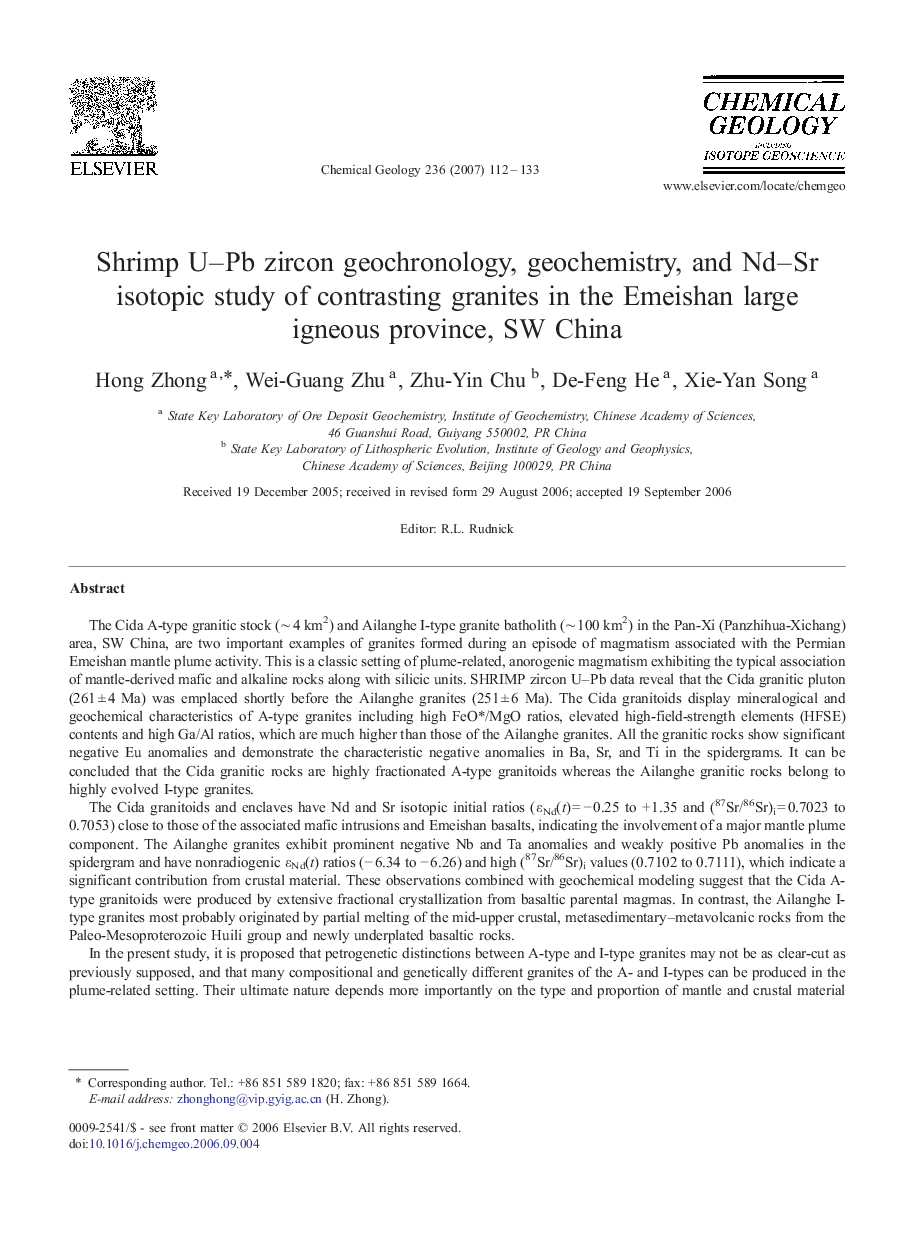| کد مقاله | کد نشریه | سال انتشار | مقاله انگلیسی | نسخه تمام متن |
|---|---|---|---|---|
| 4700955 | 1637758 | 2007 | 22 صفحه PDF | دانلود رایگان |

The Cida A-type granitic stock (∼ 4 km2) and Ailanghe I-type granite batholith (∼ 100 km2) in the Pan-Xi (Panzhihua-Xichang) area, SW China, are two important examples of granites formed during an episode of magmatism associated with the Permian Emeishan mantle plume activity. This is a classic setting of plume-related, anorogenic magmatism exhibiting the typical association of mantle-derived mafic and alkaline rocks along with silicic units. SHRIMP zircon U–Pb data reveal that the Cida granitic pluton (261 ± 4 Ma) was emplaced shortly before the Ailanghe granites (251 ± 6 Ma). The Cida granitoids display mineralogical and geochemical characteristics of A-type granites including high FeO⁎/MgO ratios, elevated high-field-strength elements (HFSE) contents and high Ga/Al ratios, which are much higher than those of the Ailanghe granites. All the granitic rocks show significant negative Eu anomalies and demonstrate the characteristic negative anomalies in Ba, Sr, and Ti in the spidergrams. It can be concluded that the Cida granitic rocks are highly fractionated A-type granitoids whereas the Ailanghe granitic rocks belong to highly evolved I-type granites.The Cida granitoids and enclaves have Nd and Sr isotopic initial ratios (εNd(t) = − 0.25 to + 1.35 and (87Sr/86Sr)i = 0.7023 to 0.7053) close to those of the associated mafic intrusions and Emeishan basalts, indicating the involvement of a major mantle plume component. The Ailanghe granites exhibit prominent negative Nb and Ta anomalies and weakly positive Pb anomalies in the spidergram and have nonradiogenic εNd(t) ratios (− 6.34 to − 6.26) and high (87Sr/86Sr)i values (0.7102 to 0.7111), which indicate a significant contribution from crustal material. These observations combined with geochemical modeling suggest that the Cida A-type granitoids were produced by extensive fractional crystallization from basaltic parental magmas. In contrast, the Ailanghe I-type granites most probably originated by partial melting of the mid-upper crustal, metasedimentary–metavolcanic rocks from the Paleo-Mesoproterozoic Huili group and newly underplated basaltic rocks.In the present study, it is proposed that petrogenetic distinctions between A-type and I-type granites may not be as clear-cut as previously supposed, and that many compositional and genetically different granites of the A- and I-types can be produced in the plume-related setting. Their ultimate nature depends more importantly on the type and proportion of mantle and crustal material involved and melting conditions. Significant melt production and possible underplating and/or intrusion into the lower crust, may play an important role in generating the juvenile mafic lower crust (average 20 km) in the central part of the Emeishan mantle plume.
Journal: Chemical Geology - Volume 236, Issues 1–2, 15 January 2007, Pages 112–133